It seems like everyone is either talking about or already using personality assessments. Emerging demographic shifts and the accompanying tight labor market mean that personality assessments have shifted from the rare “nice to have” to a common and critical tool for finding, retaining, and developing the right talent. This shift marks the use of personality assessments as something substantially more than a recent uptick, instead approaching what futurist and best-selling author Daniel Burrus defines as a hard trend or “future certainty”.
But while the adoption of personality assessments might be inevitable, the successful application of personality assessments is less certain. What are the key roadblocks that prevent success when using these potentially powerful tools for attracting, retaining, and developing talent?
What Are Personality Assessments?
A personality assessment is a tool for systematically describing an individual’s behavioral preferences and tendencies. When organizations seek to use personality assessments, they are generally looking for help at one of three levels. The industry is shaped like a pyramid, with three distinct levels. Here is a brief overview of each.
Effective (base of pyramid): Assign labels or colors to give simple insight into behavioral characteristics
Enhanced (middle of pyramid): Based on labels and gives a heads-up of what to be aware of for you and for others who might interact with you
Engaged (pinnacle of the industry): Develop a roadmap centered around the individual’s personality footprint together with competencies and context. Understanding how personalities and competencies align with roles and shape team dynamics provides an organizing framework to optimize performance, increase engagement, improve retention, and develop strong talent pipelines.
Common Roadblocks that Prevent Success
Despite best efforts and the best of intentions, some organizations have tried, without success, to implement personality assessments. Why did they fail to deliver operational and cultural improvements? There are several pitfalls that we see most often:
Roadblock 1: Labels Without a Plan
Many of the most widely available self-assessment tools provide some form of personality type or label along with a simple write-up of what that label means. While this approach does provide an accessible entry into personality assessments, the overly generic summaries provide limited guidance and, at their worst, may read more like a horoscope.
Ultimately, many of these tools make the participant feel like they are broken, focusing on perceived limits and addressing flaws instead of focusing on where your unique personality profile positions you for workplace success.
The right tools robustly assess workplace behaviors, are easy to apply across all stages of the employee lifecycle, and are scientifically validated – not just anecdotal recommendations. These validated tools often delve into the participant’s personality attributes and subtraits. Those then lead to workplace competencies supported by the assessment data. These competencies include a range of key workplace behaviors including communication, collaboration, leadership, and learning agility.
If you have ever seen someone struggle in one organization but thrive in a similar role elsewhere, you’ve witnessed the power of aligning personality with role, team, and culture. Conversely, if you have seen a superstar in one role struggle in another, you’ve seen what is often the result of misalignment.
Roadblock 2: Outdated Assessments that Focus on the Past
Although personalities tend to be fairly stable, many organizations fail to appreciate how changes in skills, roles, teams, and other contexts interact with one’s personality footprint over time. As a result, that initial personality assessment and its first application to workplace performance is mistakenly treated as a permanent portrait. Sustained success with personality assessment efforts instead require professionals to regularly revisit assessment results in these new contexts and to reassess personality every 3-5 years.
The development partners adjust plans and collaborate with the participants to ensure that guidance is suited to current and future needs, not the past. The right assessment solutions give the participants and trained development partners the tools to know what to do now based on the organizational goals, team dynamics, and participants’ competencies.
A leadership coach recently shared the importance of recognizing that our attributes can change over time, shift based on our experiences, and benefit from an updated assessment. His client was a professional who had risen to Vice President of Operations in a service organization but was now stuck in a vicious cycle of lackluster performance, disengagement, and negative emotions that led him to question many aspects of his personal and professional life.
By taking a new assessment and framing the coaching sessions around his new role, it became clear to all parties that the detailed and solo work energizing him earlier in his career were not essential elements of his current position. This new assessment, evaluated in the context of his new responsibilities, enabled him to see the misalignment between his current personality profile and his perceived leadership demands. These insights eliminated the ambiguities and conflicts plaguing his performance, revealing how he can best lead and communicate with his team and adapt his role to best leverage those areas that energize him. He is now thriving, having increased his professional contributions and enhanced his personal well-being. Without this breakthrough, his personal and professional success would be in jeopardy.
Roadblock 3: Traits without Competencies
The 3rd major roadblock comes from assessments that focus on traits but overlook competencies. Competencies are sets of behaviors that support successful completion of job-related tasks. When we align a person’s individual personality profile with the competencies required for a job, we provide the fuel for sustained workplace success and help people feel energized rather than drained in their role. Like in the above example, personality attributes can drive different results in different roles and with different teams.
Personality assessments are an invaluable tool for talent management. These tools allow talent management professionals to align behavioral fit for not only current roles of those in their talent pipeline but also potential future roles. Behavioral-based competency measurement then provides a proactive tool to develop these future leaders in specific competencies needed at each step along their path. If you know that a future role requires skills that an individual lacks, then you have a formula for professional development that sets the organization up for successful succession planning and growth.
Conclusion
Like most organizational investments, you often get what you pay for. If you properly define your objectives up front, provide a roadmap for how you’ll use the insights, and ensure that you rely on these tools for organizational development from recruitment through pipeline and leadership development, you can achieve remarkable success building a thriving culture. When executed with consistency and dedication, you should see improved engagement, job satisfaction, retention, and operational excellence along the way.

